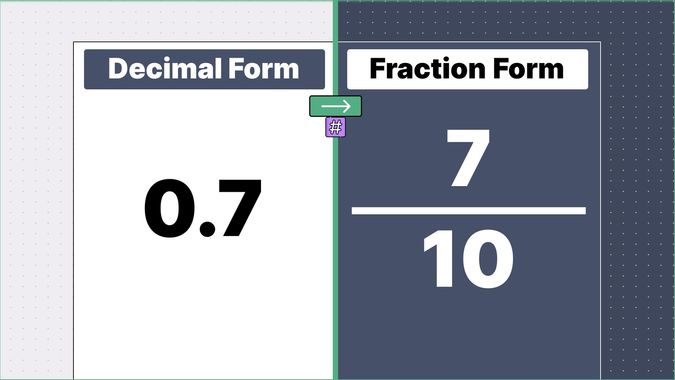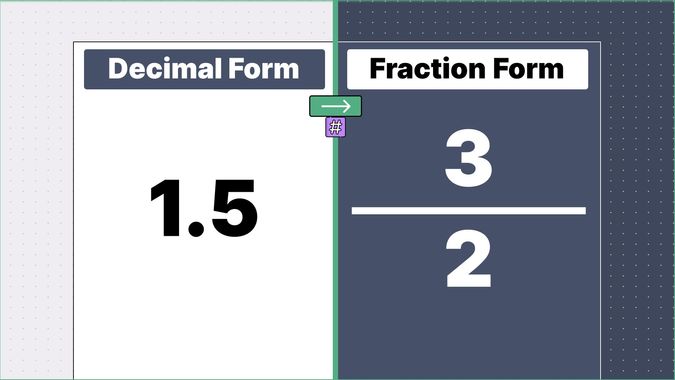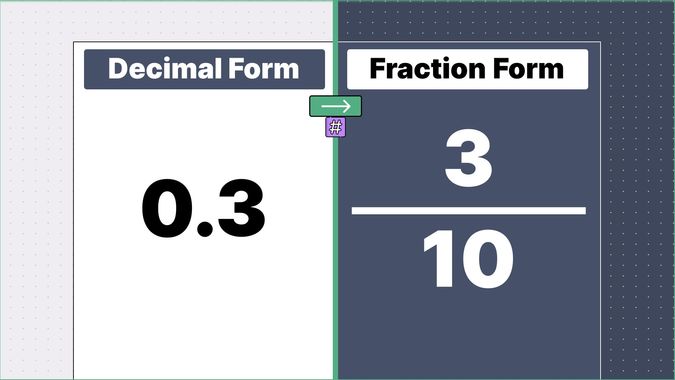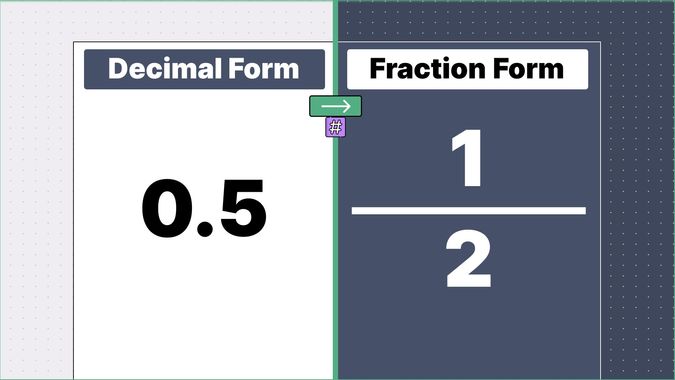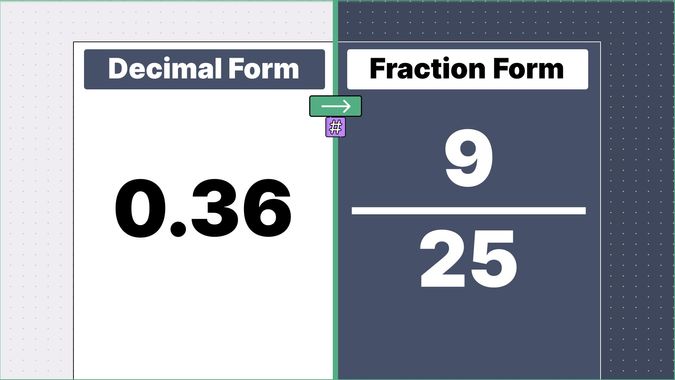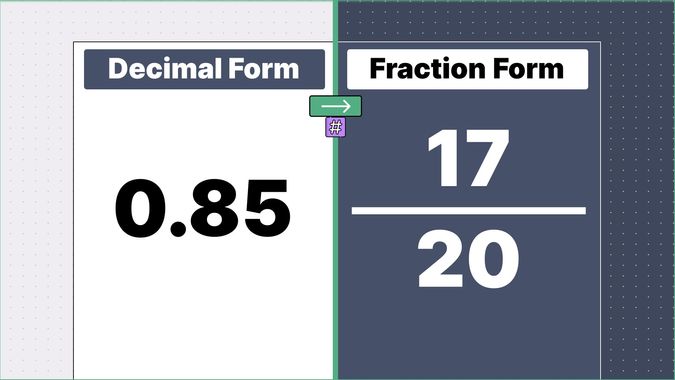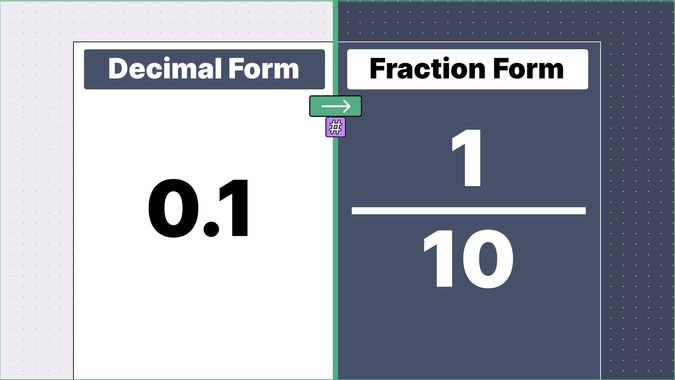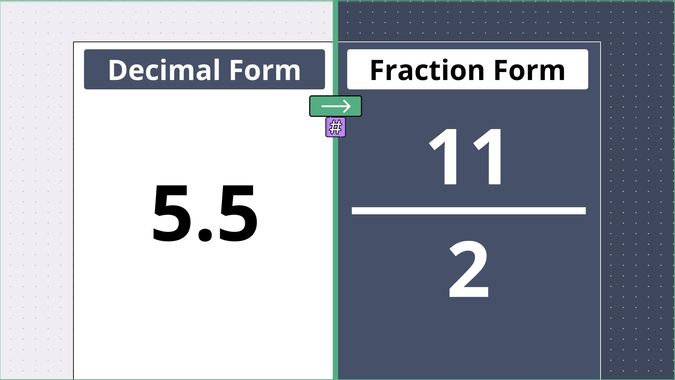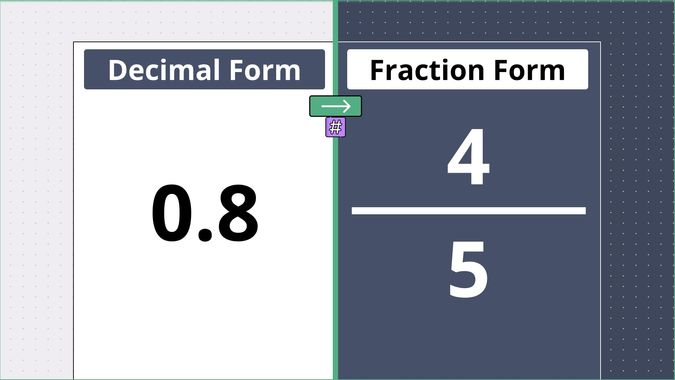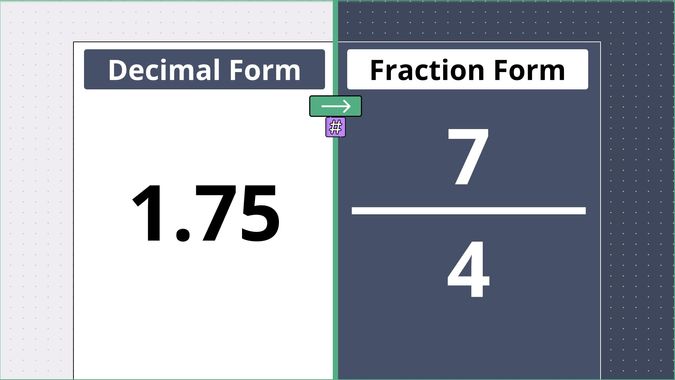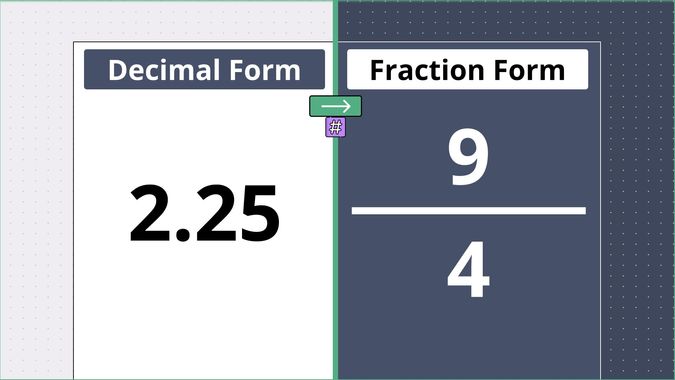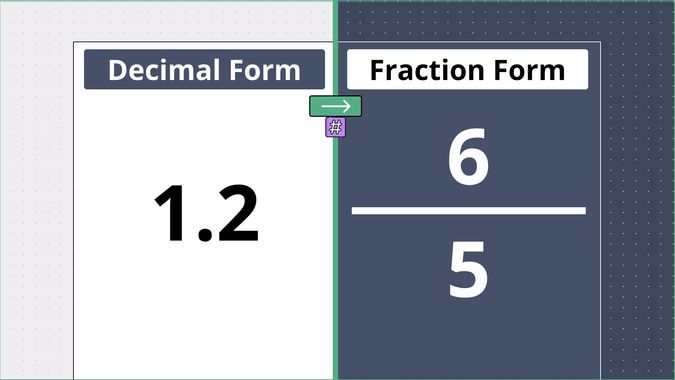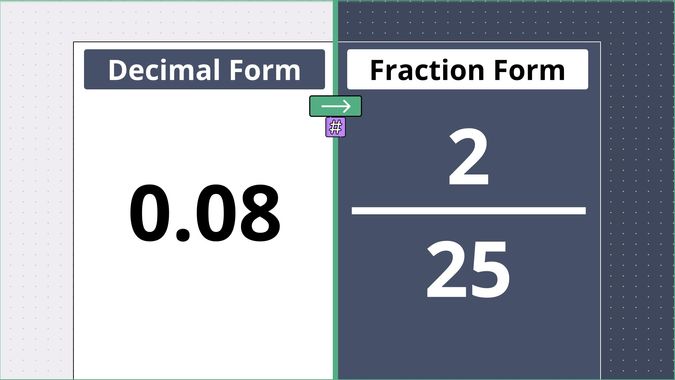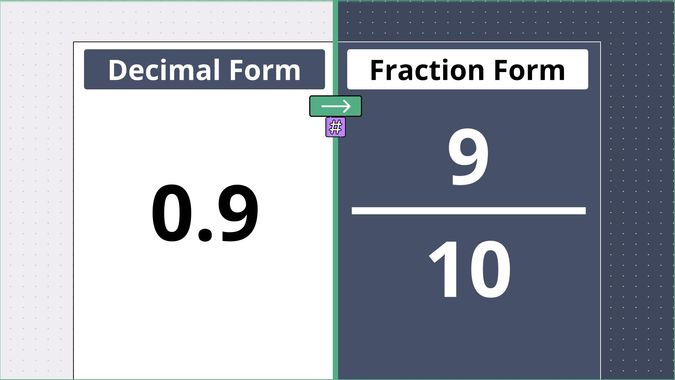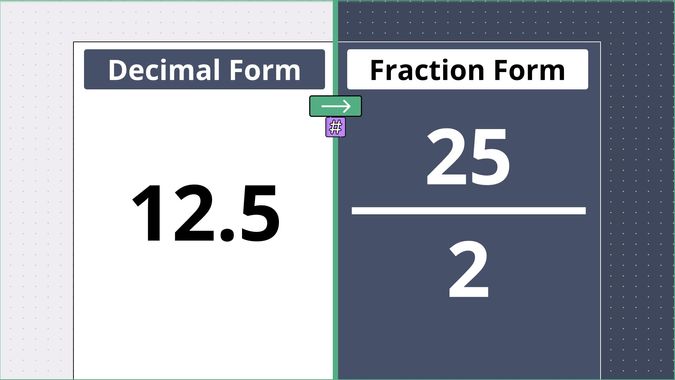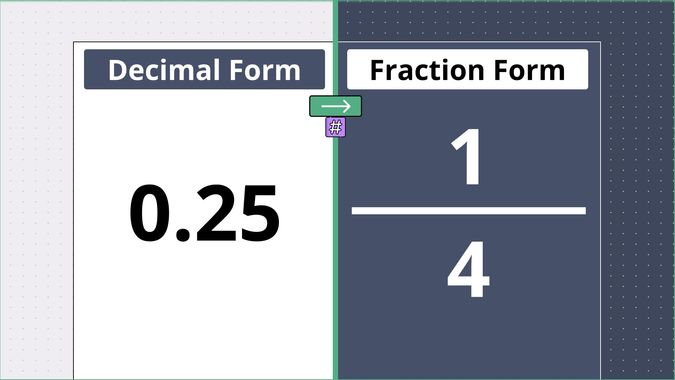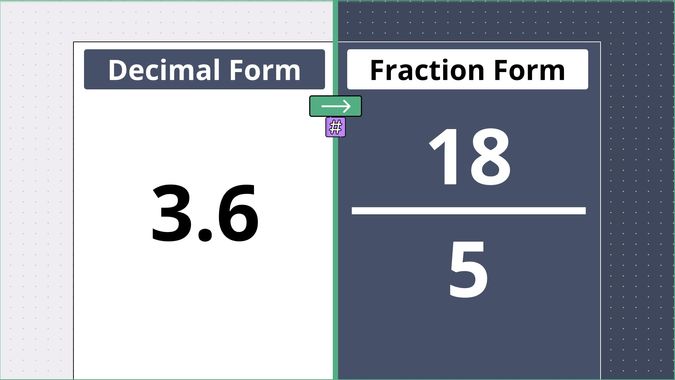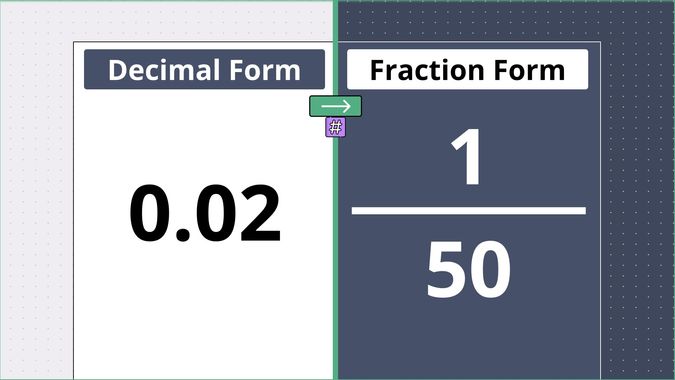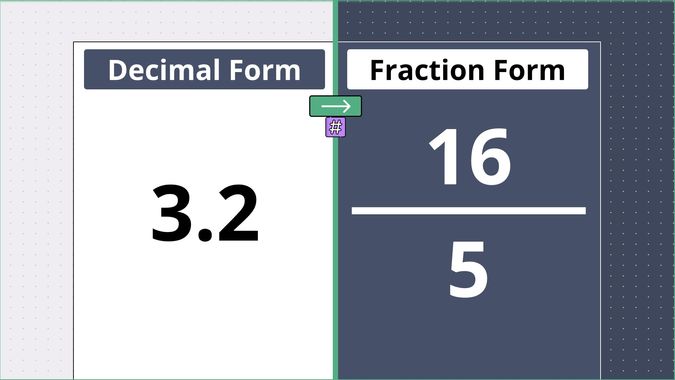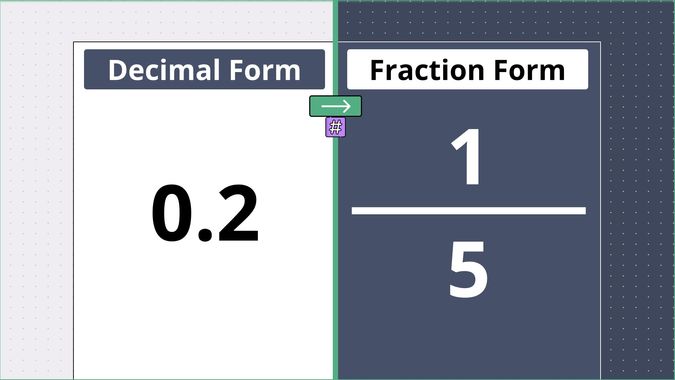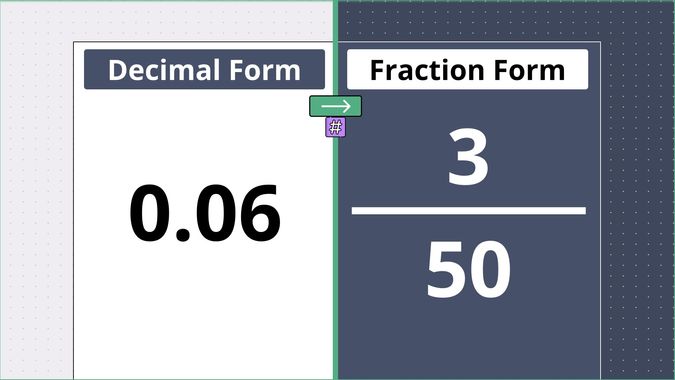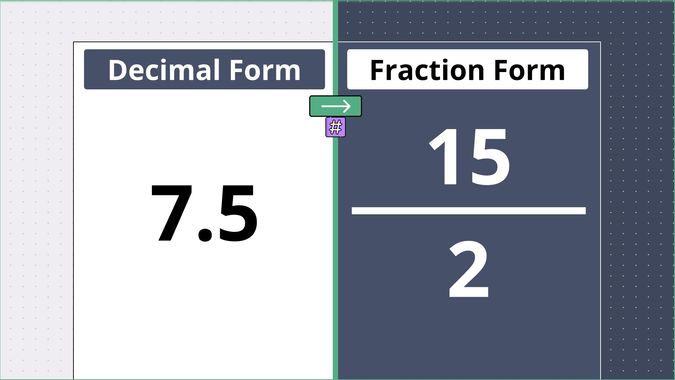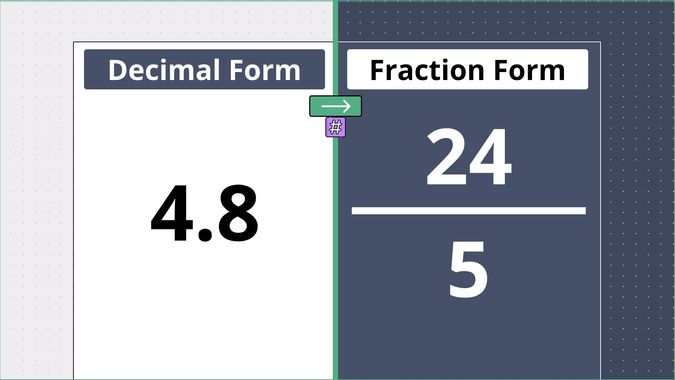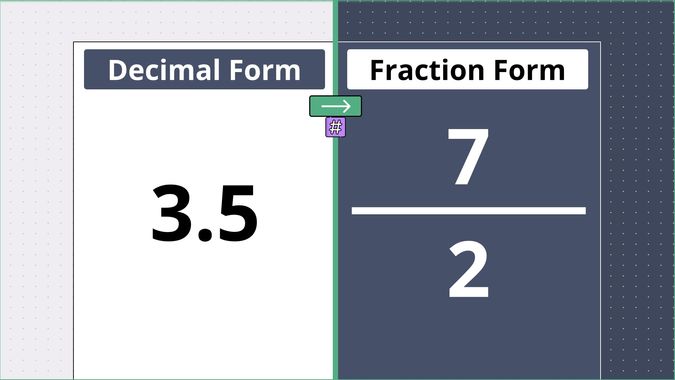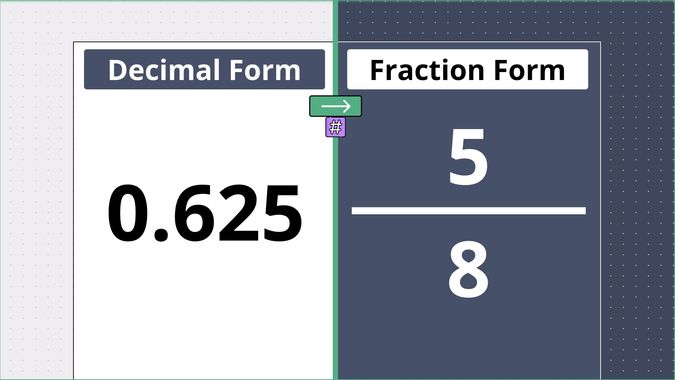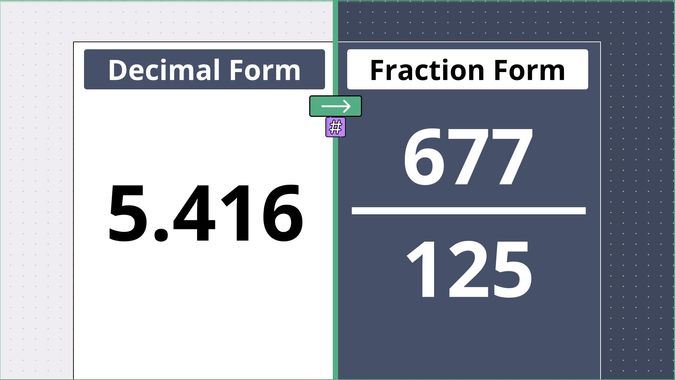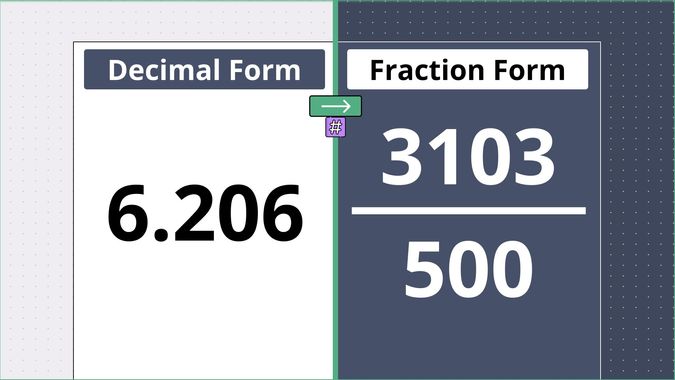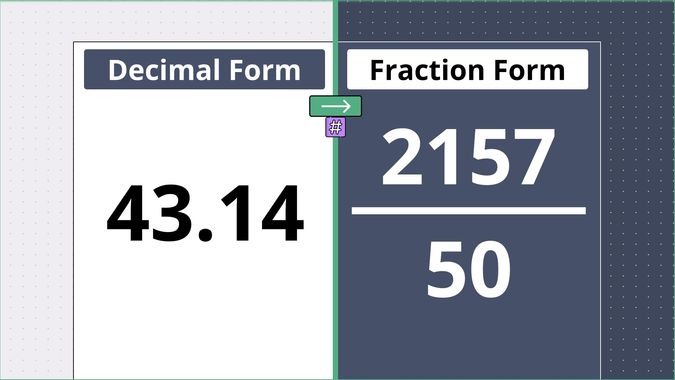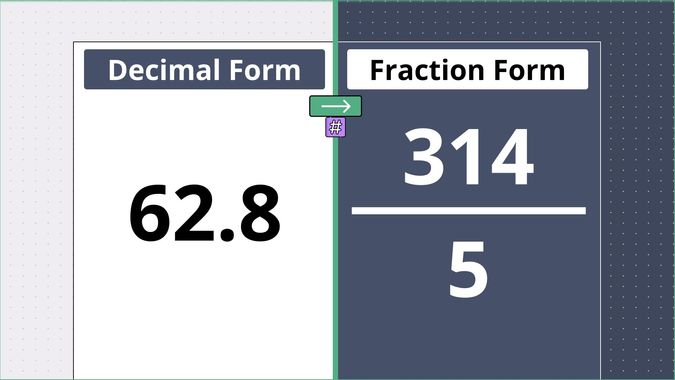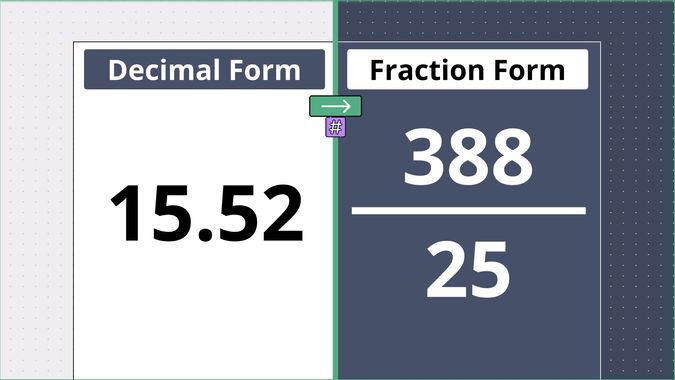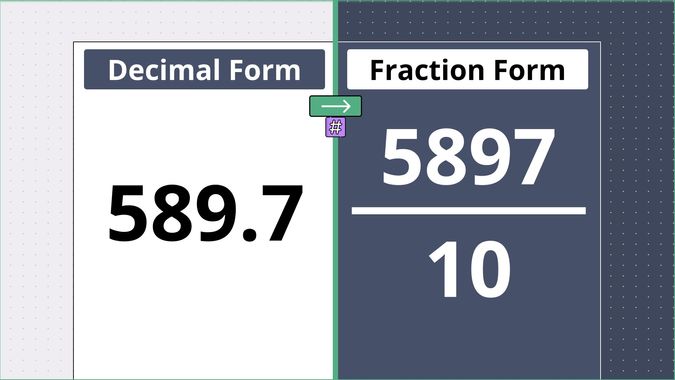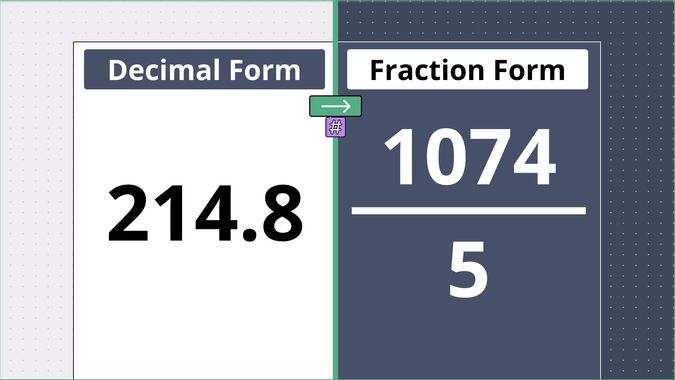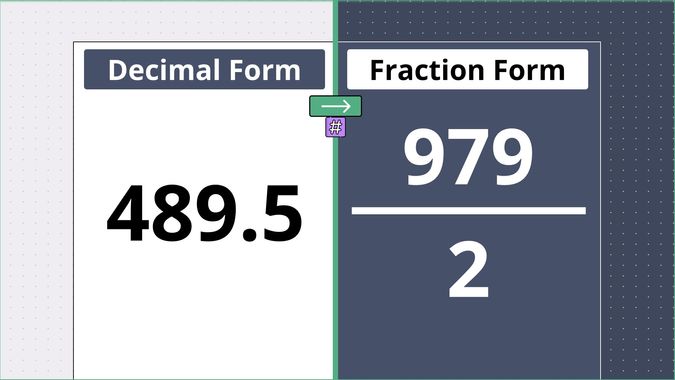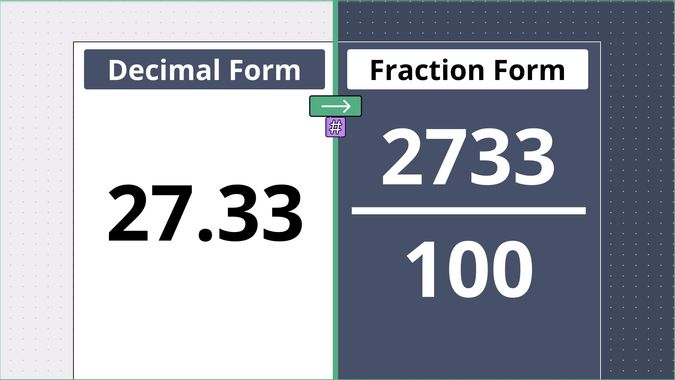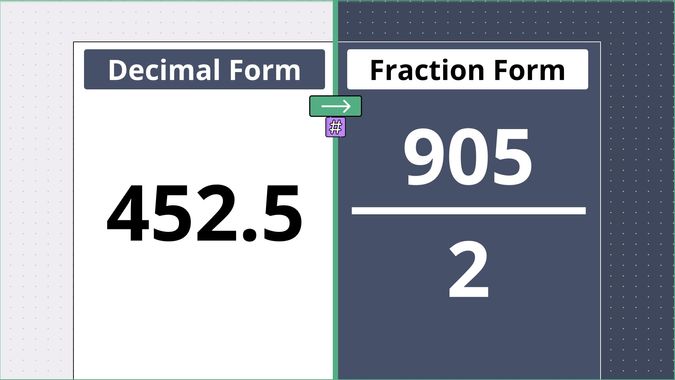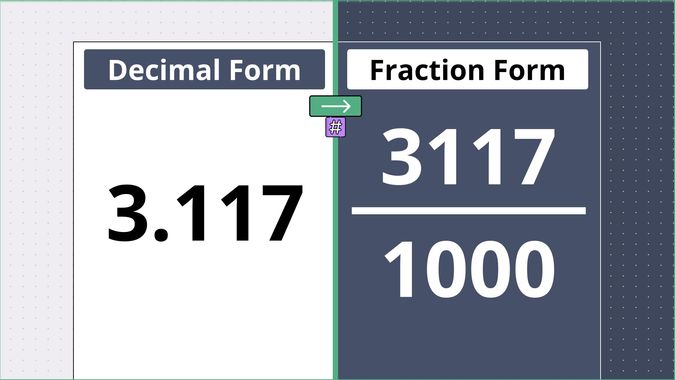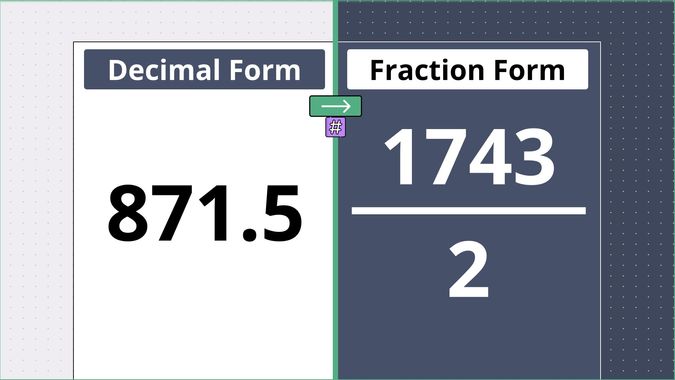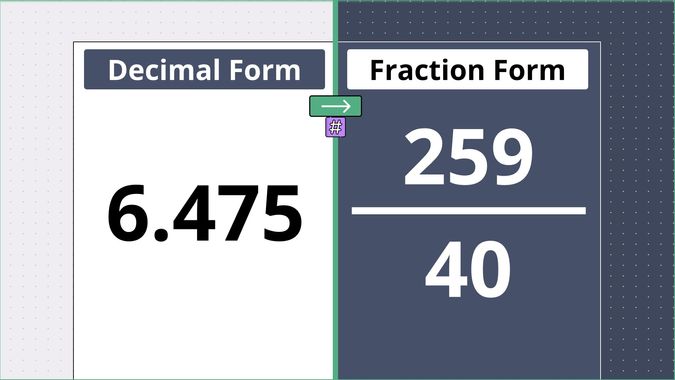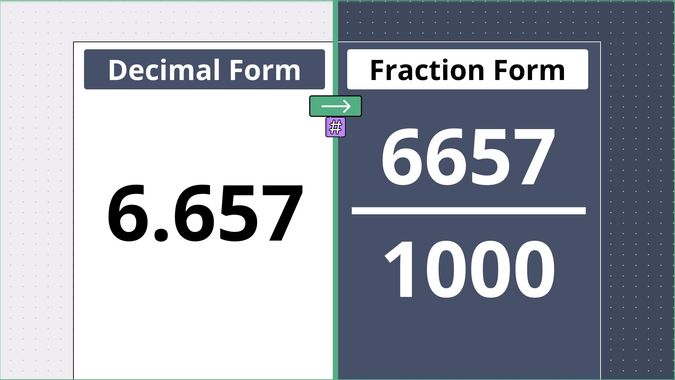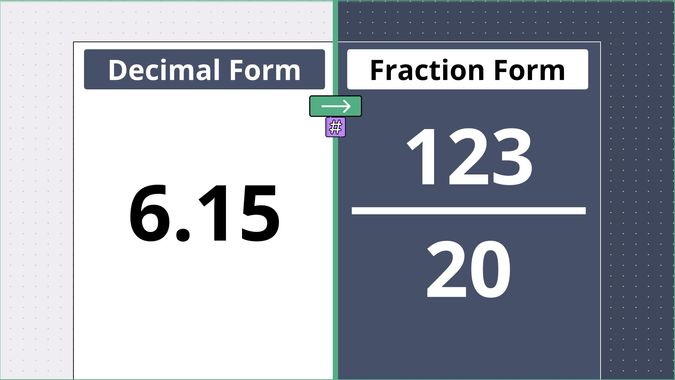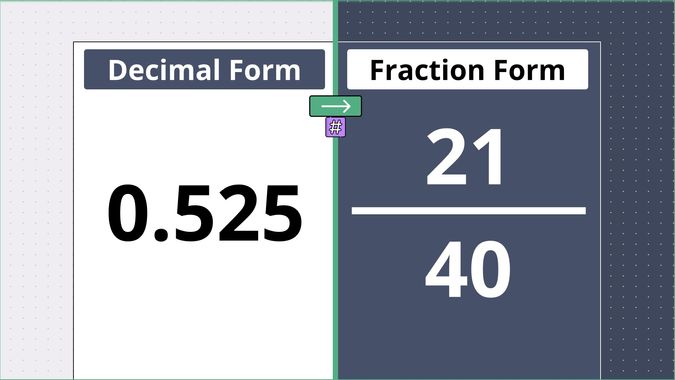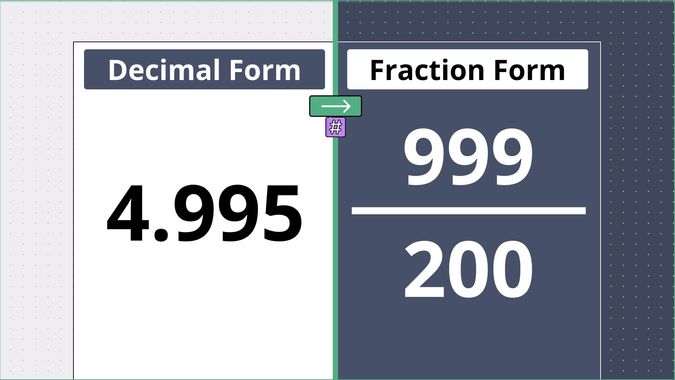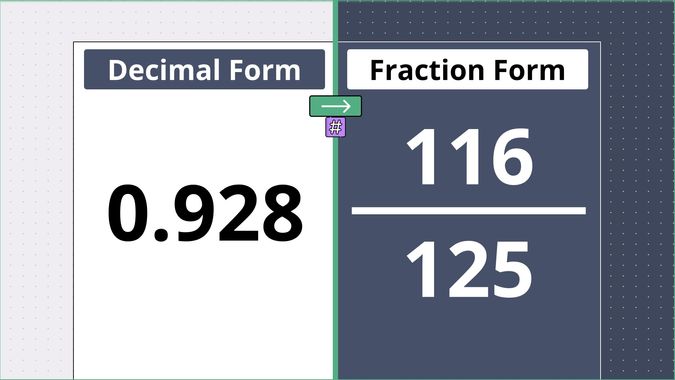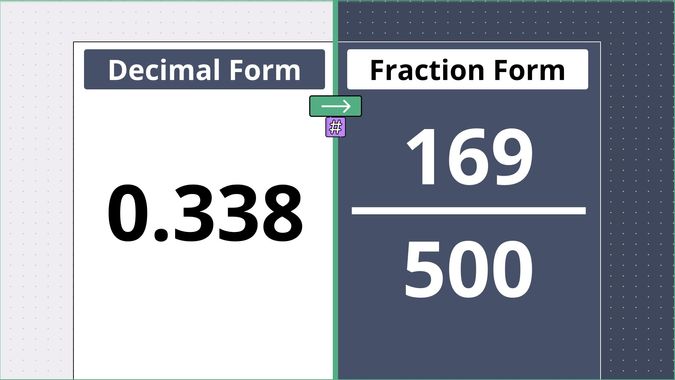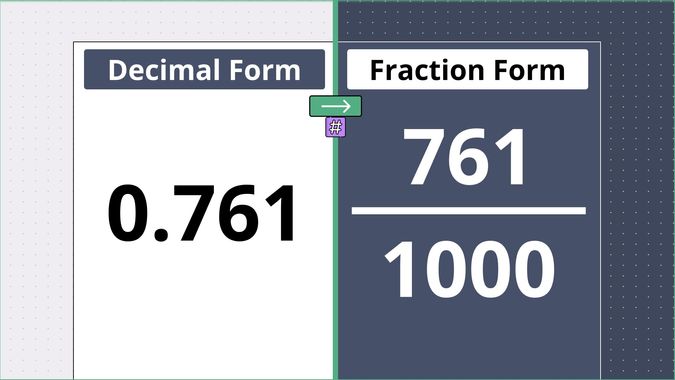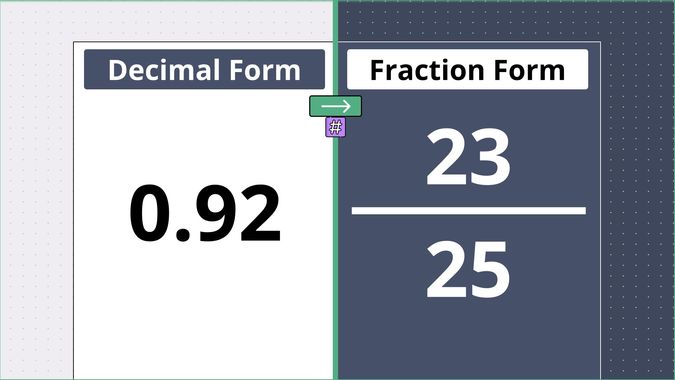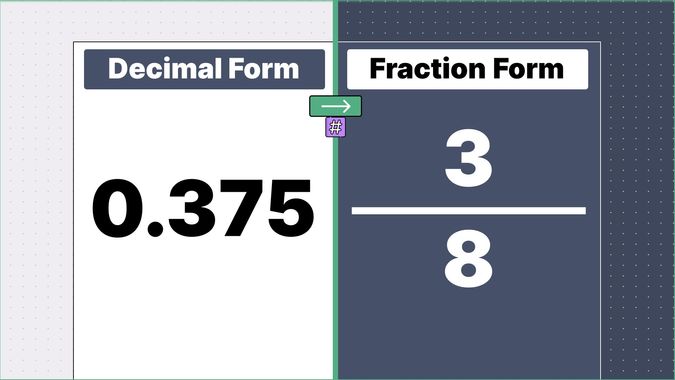
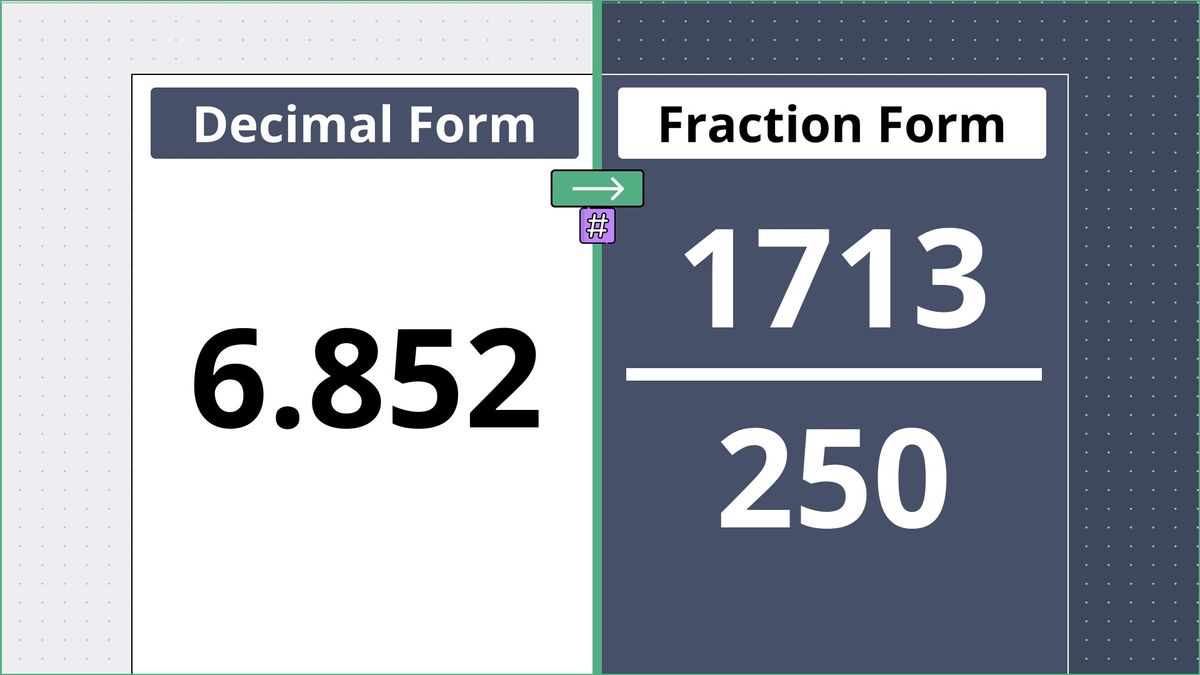
What is 6.852 as a Fraction?
When it comes to transforming decimals to fractions, certain numbers can be more intriguing than others. This guide will show you exactly how to express 6.852 as a fraction. This guide will not only show you exactly how to express 6.852 into a fraction but also ensure you grasp the method behind it.
And for a swift and seamless conversion of any decimal into a fraction, our Decimal to Fraction Calculator stands ready to assist.
Quick answer: The decimal 6.852 expressed as a fraction is 1713/250
Understanding 6.852 as a Fraction in 6 Simple Steps
1. Separate the whole number and the decimal
The original number we're dealing with is 6.852. This number is not just a decimal, it's a combination of a whole number and a decimal. In other words, it's a mixed number - a number that includes both a whole number and a fraction.
In 6.852, the number to the left of the decimal point is the whole number part, and the number to the right is the decimal part. So in this case:
- The whole number part is "6"
- The decimal part is "852"
This is significant because in our next steps we're going to treat these two parts separately.
2. Determine the Decimal Place Value
The place value of a decimal is determined by the number of digits to the right of the decimal point. In the case of turning 6.852 into a fraction, we find its place value is in the thousandths place because are three digits after the decimal point.
Here is the breakdown of the digits after the decimal point (see image for better understanding):
- 8 is at the tenths place
- 5 is at the hundredths place
- 2 is at the thousandths place

3. Write the decimal part as a fraction
Given the decimal 6.852, you'd write it over the place value. This means 852 (the numbers to the right of the decimal point) over 1000 (denoting its place value).
This gives 852/1000 as the initial fraction.
4. Simplify the fraction
To simplify the fraction, you need to find the greatest common divisor (GCD), also known as the greatest common factor (GCF), for both the numerator and the denominator.
Let's use the fraction from Step 3, which is 852/1000.
How do you find the GCD of 852 and 1000? There are several methods to find the GCD of two numbers, including the division method, prime factorization, or using Euclid's algorithm. However, we'll use the prime factorization method as it's often the simplest:
-
Factorize both numbers into their prime factor. Tip - use our
prime factors calculator
for quick results:
- The prime factors of 852 are 2, 2, 3, 71
- The prime factors of 1000 are 2, 2, 2, 5, 5, 5
-
Identify the common factors of both numbers from the prime factors above:
- The common factors between 852 and 1000 are 2, 2
-
Calculate the GCD: To find the GCD, multiply the common prime factors together:
- 2 * 2 = 4
Hence, the GCD of 852 and 1000 is 4.
Now, divide both the numerator and the denominator of the fraction by their GCD (4) to simplify the fraction.
- 852 ÷ 4 = 213
- 1000 ÷ 4 = 250
Therefore, the fraction 852/1000 simplifies to 213/250.
5. Combine the whole number and the fraction
Now, just combine the whole number and the fraction. In this case, combine 6 and 213/250 to make the mixed number 6213/250.
6. Convert to improper fraction
Lastly, we want to convert this mixed number into a fraction. The numerator of this fraction will be calculated by (Whole Number * Denominator of the fraction) + Numerator of the fraction:
(6 * 250) + 213 = 1713
The denominator of our improper fraction is the same as the denominator of the fraction in step 5. So, the denominator is 250.
Put it together: The improper fraction is 1713/250.
So, the decimal 6.852 is equivalent to the mixed number 6213/250 which can be represensted as an improper fraction 1713/250.
Want to convert another decimal to fraction without the manual hassle? Use our dedicated Decimal to Fraction Calculator for instant results.
